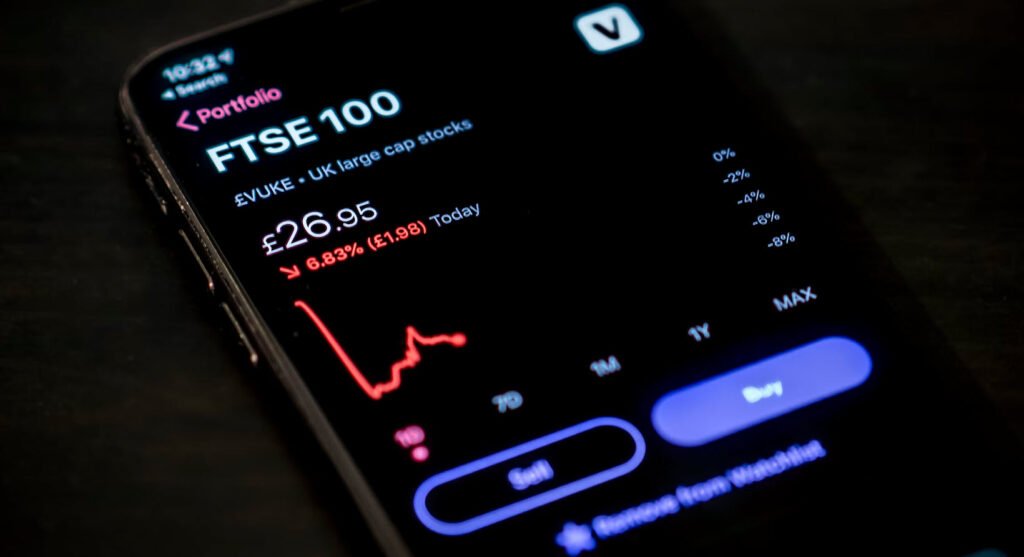
Just like any other skill, learning to trade successfully takes time. It can take months, and sometimes years, to really understand and learn to invest successfully. It’s not complicated at all. It’s just something “new” – so there is a learning curve to work through. That’s what takes time.
Also Read: 300+ Commonly Used Abbreviations Related To Stock Market
Therefore, this is the best time to start investing. Because the longer you wait, the longer it will take for you to get good at it. So, now is the best time to get started.
Don’t rush things. Take your time and learn what I’ll share in this report and it will serve you well. You’ll find that patience will become one of your most profitable assets. The trading terms as listed below may seem complicated at first. They really aren’t. Just spend a few minutes learning the terms and pretty soon, you’ll get it.
1. American Stock Exchange (AMEX) – Second largest stock exchange in the US
2. AMEX Market Value Index – Measurement of all stocks on the American Stock Exchange
3. Asking price – The price an investor pays to purchase stock
4. At-the-money option – when the strike price of an option is the same as the current market price of the underlying commodity. For example, suppose the strike price on a June gold option is $305; and gold is now trading at $305. That option is at the money.
5. At the money – The condition that exists for an option when its underlying stock reaches the strike price before its expiration date
6. Bear – a person or who thinks market prices are going to fall.
7. Bear market – when market prices are falling.
8. Bid – an offer to buy a specific commodity, at a specific price.
9. Bid price – Price the investor receives for sale of stock
10. Blue-chip stock – Stock of a large, stable, well-established company
11. Broker – A company or individual that facilitates a stock transaction but does not have ownership of the stock at the end of the sale
12. Bull – a person who thinks market prices are going up.
13. Bull market – A prolonged period of rising stock prices
14. Buy-and-hold – A strategy in which an investor purchases securities and holds on to them taking into consideration the long-term outlook of the underlying companies
15. Call option – An option that give you the right to buy a specific commodity or financial instrument, at a set price, on or before a specific date. When you own an option, you do not have to buy the underlying commodity. The price you pay to buy the option itself is called the “premium”.
16. Cancelling order – an order that cancels, or deletes, your previous order with your broker.
17. Capital gain – Money an investor earns by selling stock for a profit
18. Capital loss – Money an investor loses by selling a stock for less than was paid for it
19. Charting – using charts and graphs to analyze markets, so you can predict where market prices are going in the future. (Used in “Technical Analysis.”)
20. Close an option position – To buy and sell back an option to make a profit.
21. Closing price – the last price paid for a commodity or financial instrument on any trading day. This is the price the exchange clearinghouse uses, to determine each firm’s gains or losses for the day. Also called “settlement price.”
22. Commission – a fee brokers charge to execute your transactions. Also called a “brokerage fee.” Commissions vary between brokers. Discount brokers will usually execute your orders at much lower commissions.
23. Contract – an agreement to buy or sell a commodity, specifying the amount and quality of the product, and the date when the contract matures and can be delivered.
24. Covered option – An option that is written by an investor who owns shares of the underlying stock
25. Crash – A large drop in the overall value of stock prices on a particular day or period of days.
26. Day Trader – An investor who buys and sells based on small short-term stock price fluctuations
27. Depreciation – Loss of value of an asset
28. Derivative – A security whose value is based on another security such as Options and Futures
29. Dip – Slight drop in securities prices after an upward move.
30. Discount Broker – A brokerage house that executes orders to buy and sell securities at sharply lower rates than a Full Service Broker. They usually offer almost no service or advice but trade for a reduced commission.)
31. Dividend – distribution of earnings to shareholders, prorated by class of security and paid in the form of money, stock or scrip
32. Dividend yield – Annual percentage of return earned by an investor on a common or preferred stock
33. Downside Risk – Estimate that a security will decline in value and the extent of the decline, taking into account the total range of factors affecting market price
34. Downtick – Sale of a security at a price below that of the preceding sale
35. Downturn – Shift of an economic or stock market cycle from rising to falling
36. Dumping – Offering large amounts of stock with little or no concern for price or market effect
37. Earnings per Share – EPS – Measure of a company’s profitability calculated by dividing net income by shares outstanding on the income statement
38. Earnings-Price Ratio – Earnings yield – earnings per share to current stock price relationship
39. Economic Growth Rate – Rate of change in the Gross National Product as expressed in an annual percentage
40. Economic Indicators – Key statistics including unemployment rate, inflation rate, factory utilization rate and balance of trade which shows the direction of the economy
41. Economic Risk – The danger to investors that the economy will decline
42. Exercise – when a person who owns a call option buys the underlying security; or a person who owns a put option sells the underlying security.
43. Exercise An Option – To buy or sell the underlying stock of an option
44. Federal Trade Commission – FTC – US government agency that regulates competitive markets with regard to encouraging free trade and discouraging monopolies
45. Fill-or-kill – a price limit order that must be filled at once or get canceled.
46. Fundamental analysis – analyzing markets by looking at their underlying economic, political, and supply-demand relationships.
47. Futures contract – a contract made on the floor of a futures exchange, to buy or sell a commodity or financial instrument at some date in the future. Futures contracts list the commodity; the date; the amount of the commodity; and the price.
48. Futures Option – Option on a futures contract.
49. Going short – Selling a stock or commodity that the seller does not have, usually betting that the price will go down.
50. Good-till-cancelled order – an order you place with your broker, which stays valid until you cancel it. Also called an “open order.” (Restrictions vary depending on broker.)
51. Horizontal spread – buying a put or a call, and at the same time selling the same option, with the same strike price, but with a different expiration month.
52. Index Fund – A mutual fund that invests in all the stocks of companies in a particular index.
53. Index Option – An option with a stock index as its underlying asset.
54. Insider Trading – Illegal manipulation of the stock market with profit as the intent by employees and officers of a corporation through the use of information not available to the public.
55. Interest – Payment for money that is borrowed.
56. In-the-money option – an option that has intrinsic value. For a call option, that means the strike price is less than the current price for the underlying commodity. That lets you buy at the lower strike price, and immediately sell at the current market price, for a profit.
57. Lapsed Option – Option that reached its expiration date and is now without value because it was not exercised. (Also called an ‘expired option.)
58. Last trading day – the final day when trading may take place in a given futures or options contract month. If you have any contracts outstanding at the end of the last trading day, you must settle them. You do this by delivering the underlying commodity, or by agreeing to a money settlement.
59. Leverage – the ability to control large dollar amounts of a commodity, with a small amount of capital. Options and Futures allow you to control large amounts of shares with minimum investment.
60. Limit order – an order for a commodity on the futures exchange, to buy or sell at a designated price. When you are buying, you place limit orders below the market. When you are selling, you place limit orders above the market. If the market never gets high (or low) enough, your limit order will not be triggered.
61. Long – a person who has bought stocks or commodities, hoping that price will go up.
62. Market order – an order to buy or sell a stock or commodity at the best possible price, and as soon as possible. Also known as placing an order “at the market”.
63. Mutual Fund – An investment company that pools the resources of individuals to enable them to diversify in a variety of investments
64. NASDAQ Stock Market – National Association of Securities Dealers Automated Quotation System – electronic based equity market operated by NASD.
65. NASD – National Association of Securities Dealers – a self regulated organization of brokers and dealers responsible for the operation of the NASDAQ Stock Market.
66. NYSE – New York Stock Exchange – largest and most active stock market.
67. Option – a contract that gives you the right, but not the obligation, to buy or sell a particular item, at a set price, for a set time period.
68. Option premium – the price you pay to buy an option.
69. Option spread – buying and at the same time selling one or more options contracts, futures, and/or cash positions.
70. OTC – Over the counter – securities trading via computer, telephone or direct negotiations.
71. Out Of The Money – When the underlying stocks of options are below the strike price for calls or above the strike price for puts.
You may also like:- 5 NISM Certifications to Boost Your Finance Career
- Overview of the Top 42 AMC Mutual Funds in India
- Top Stocks to Watch in Modi 3.0 Era
- Top Facts about GIFT NIFTY You Need To Know
- Bull Run in Indian Stock Market Post PM Modi’s Election Win
- The $5 Billion Blow – Short Sellers of GameStop and AMC Face Massive Losses
- SEBI Maintains Status Quo on Stock Market Timings
- Apple’s Historic $110 Billion Share Buyback
- Decline in Workforce: A Look at India’s Top 5 IT Firms in FY24
- Tesla Stock Surges Despite Worse Than Expected Earnings








